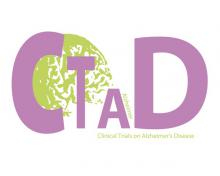Depression, anxiety, and pain are commonly experienced by older adults living in nursing homes. Objectives: To describe the prevalence of depression, anxiety disorders, and pain among newly admitted nursing home residents in the United States and to describe the treatment of these disorders. Design: Cross-sectional study of newly admitted residents. Setting: Residents able to complete a pain assessment (n=783,826) living in Medicare- and Medicaid-certified nursing homes in the United States in 2011-2012. Measures: Measures of sociodemographic, mood and behavior, pain, diagnoses, and functioning items from the Minimum Data Set (MDS) version 3.0. Results: Approximately 36% of residents had a diagnosis of depression (other than bipolar disorder) and/or an anxiety disorder (n = 272,311). Of these residents, 25.2% had both depression and an anxiety disorder (95% CI = 25.0-25.4%), 54.3% (95% CI = 54.1-54.5%) had depression without an anxiety disorder, and 20.5% had an anxiety disorder without depression (95% CI = 20.3-20.6%). Fifteen percent had the triad of depression, anxiety, and pain at admission (95% CI = 9.3-23.3%). Depressive symptoms were more commonly reported by residents with pain than by those without pain. Receipt of psychological therapy (range: 0.9%-2.0%) or any psychiatric medication was lacking (range: 35.3%-48.5%), regardless of pain status. Participants reporting pain received a combination of scheduled, pro re nata (PRN)/ as-needed, and non-medication pain interventions (range: 59.8% depression without anxiety to 62.9% depression and anxiety disorder). Conclusion: Residents often suffer from combinations of depression, anxiety, and pain at admission to nursing home. While treatment of pain is more common than treatment of psychiatric treatments, both psychiatric treatment and pain management may be suboptimal in nursing homes.
(1) C.M.Ulbricht, J.N. Hunnicutt, A.L. Hume, K.L. Lapane; The Journal of Nursing Home Research Sciences Volume 5, 2019



